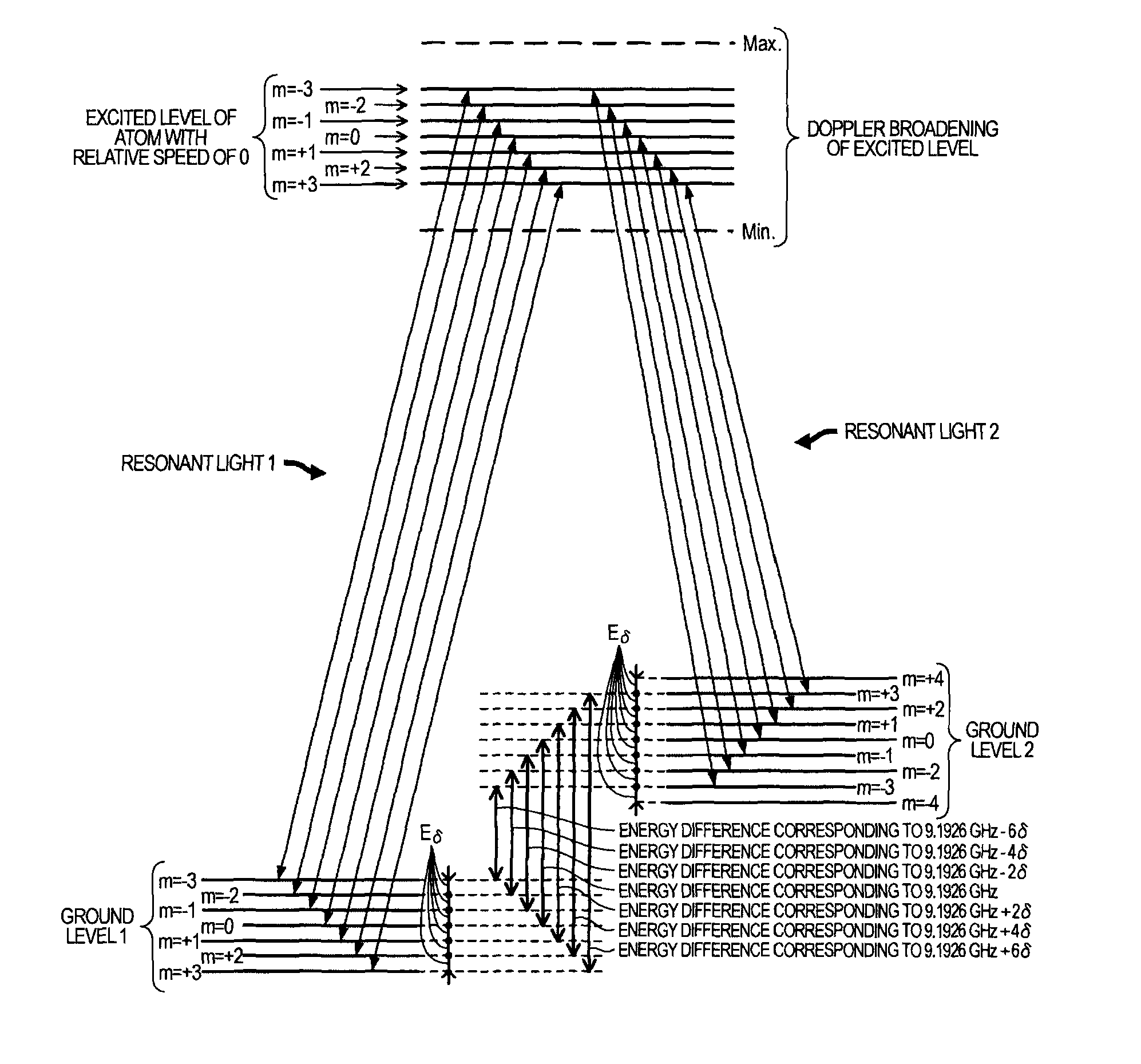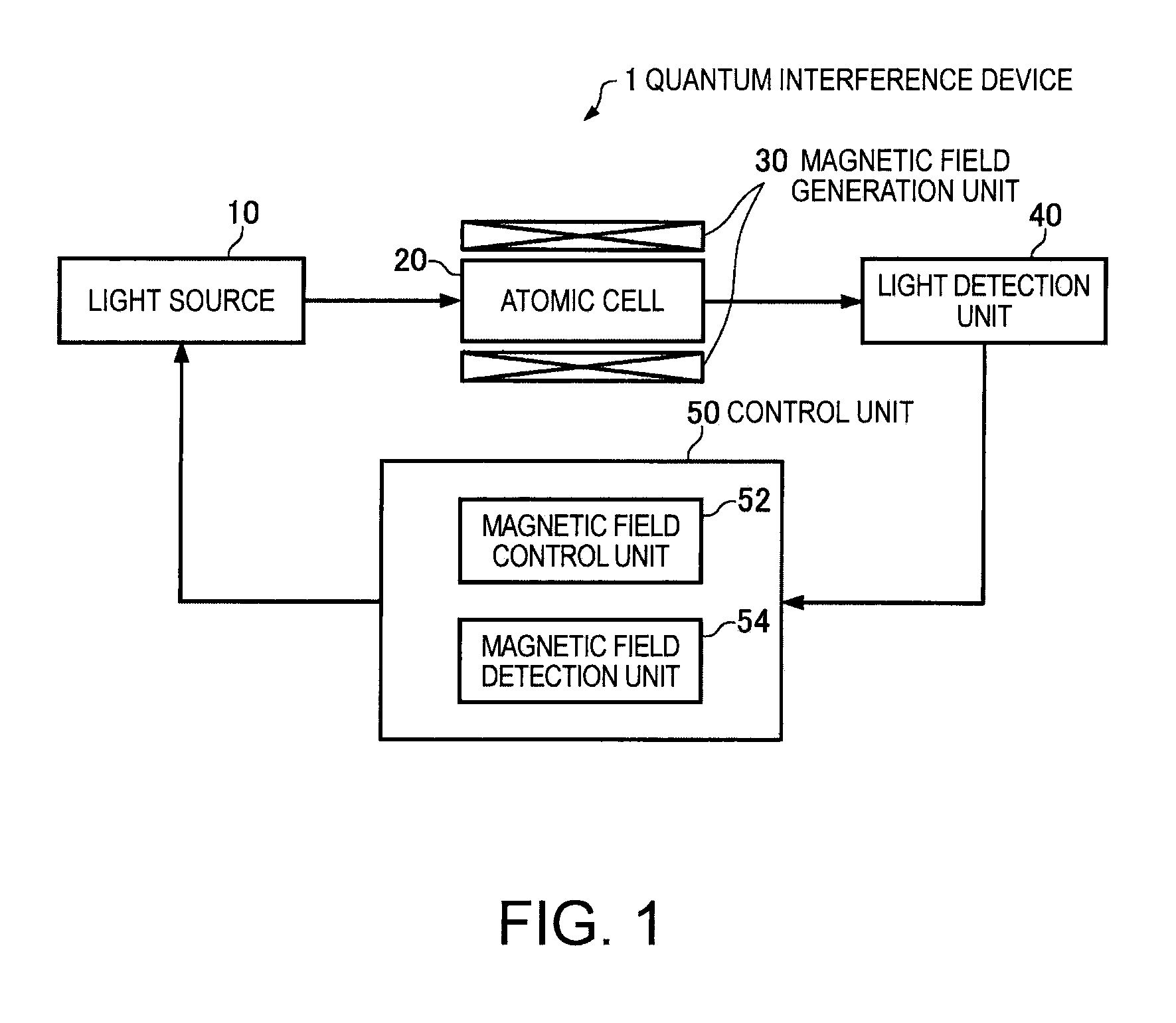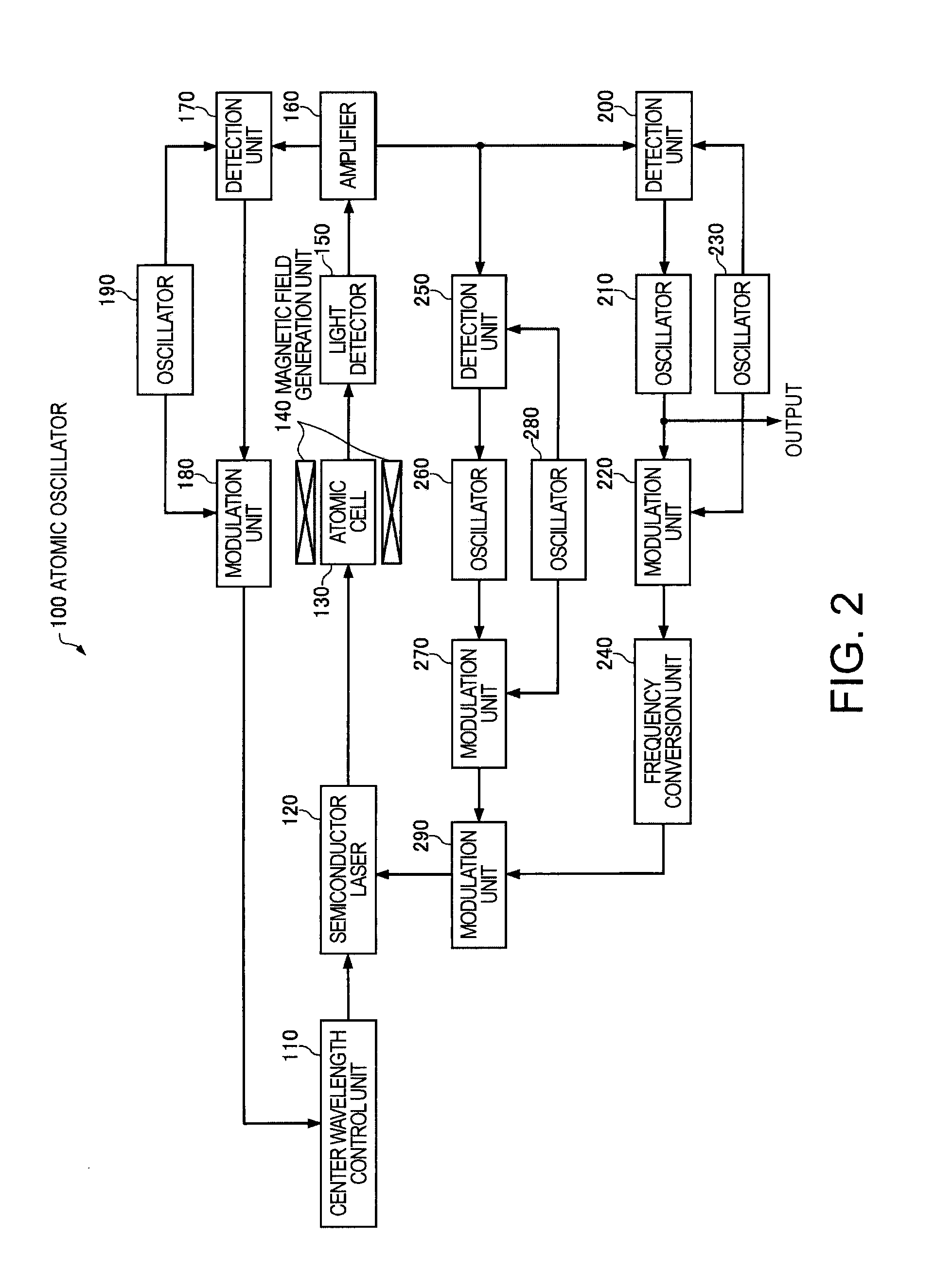Quantum interference device, atomic oscillator and magnetic sensor
a quantum interference and atomic oscillator technology, applied in semiconductor lasers, instruments, horology, etc., can solve the problems of power saving, difficult to reduce laser power, so as to improve the efficiency of laser power use and the efficiency of occurrence of an eit phenomenon in alkali metal atoms
- Summary
- Abstract
- Description
- Claims
- Application Information
AI Technical Summary
Benefits of technology
Problems solved by technology
Method used
Image
Examples
third embodiment
(3) Third Embodiment
[0092]FIG. 11 is a view showing a structure of an atomic oscillator of a third embodiment using the quantum interference device 1 of FIG. 1. As shown in FIG. 11, the atomic oscillator 100 of the third embodiment is different from the atomic oscillator 100 of the first embodiment shown in FIG. 2 in that the detection unit 250, the oscillator 260, the modulation unit 270 and the oscillator 280 are deleted, and a magnetic field detection unit 330, a frequency setting unit 340, a frequency conversion unit 350 and a magnetic field control unit 360 are newly added. In FIG. 11, the same component as that of FIG. 2 is denoted by the same reference numeral and its description is omitted.
[0093]The magnetic field control unit 360 controls so that the magnetic field generation unit 140 generates a magnetic field of desired intensity. For example, when a magnetic field generation unit 140 is a coil, the magnetic field control unit 360 controls the magnitude of a current flowi...
modified example
[0100]FIG. 12 is a view showing a structure of a modified example of the atomic oscillator 100 of the third embodiment. In an atomic oscillator 100 shown in FIG. 12, the magnetic field detection unit 330 is deleted from the atomic oscillator 100 shown in FIG. 11. Then, a frequency setting unit 340 controls a frequency conversion ratio of a frequency conversion unit 350 based on control information of a magnetic field control unit 360 to a magnetic field generation unit 140. That is, in the atomic oscillator 100 of FIG. 12, the intensity of a magnetic field is estimated based on the control information to the magnetic field generation unit 140, and the conversion ratio of the frequency conversion unit 350 is controlled. Accordingly, although the frequency accuracy of the output signal of the frequency conversion unit 350 is inferior to the oscillator 210 of FIG. 11, the accuracy of Δω has only to be secured to such a degree that alkali metal atoms enclosed in an atomic cell 130 can s...
first embodiment
(1) First Embodiment
[0101]FIG. 13 is a view showing a structure of a magnetic sensor of a first embodiment using the quantum interference device 1 of FIG. 1. As shown in FIG. 13, the magnetic sensor 400 of the first embodiment has the same structure as that of the atomic oscillator 100 of the first embodiment shown in FIG. 2 except that an oscillation signal of an oscillator 260 becomes an output signal. In FIG. 13, the same component as that of FIG. 2 is denoted by the same reference numeral and its description is omitted.
[0102]As described before, when magnetic field is applied to an atomic cell 130, the ground level 1 and the ground level 2 of an alkali metal atom are divided into plural Zeeman split levels different from each other in magnetic quantum number m. In both the ground level 1 and the ground level 2, an energy difference Eδ between two Zeeman split levels different in magnetic quantum number m by one is proportional to the intensity of the magnetic field. According to...
PUM
 Login to View More
Login to View More Abstract
Description
Claims
Application Information
 Login to View More
Login to View More - R&D
- Intellectual Property
- Life Sciences
- Materials
- Tech Scout
- Unparalleled Data Quality
- Higher Quality Content
- 60% Fewer Hallucinations
Browse by: Latest US Patents, China's latest patents, Technical Efficacy Thesaurus, Application Domain, Technology Topic, Popular Technical Reports.
© 2025 PatSnap. All rights reserved.Legal|Privacy policy|Modern Slavery Act Transparency Statement|Sitemap|About US| Contact US: help@patsnap.com



